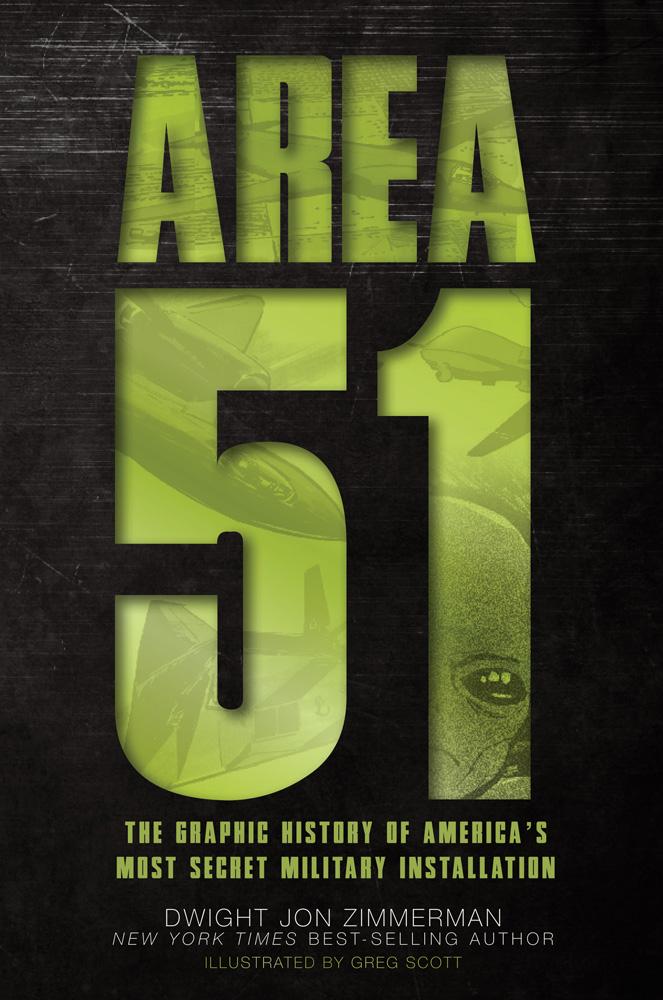Zimmerman and Scott Unveil Area 51 History in Graphic Novel
FTC Statement: Reviewers are frequently provided by the publisher/production company with a copy of the material being reviewed.The opinions published are solely those of the respective reviewers and may not reflect the opinions of CriticalBlast.com or its management.
As an Amazon Associate, we earn from qualifying purchases. (This is a legal requirement, as apparently some sites advertise for Amazon for free. Yes, that's sarcasm.)

Sometimes truth is stranger than fiction. And sometimes, fiction is a lot more fun.
For much of my life, I've heard the strange tales about Area 51, Groom Lake, Nevada and the Roswell, New Mexico UFO story -- always connected, even though the two sites are a 14 hour drive apart. Oh, the theories that were generated about the strange lights in the sky, the rousting of trespassers, the autopsies of aliens and all advanced technology that we simply couldn't have come up with on our own. It was the seed from which the best science fiction stories blossomed.
Alas, declassification tends as always to take the extraordinary and recast it as all-too-ordinary, verging on banal. With the government finally opening many of the books on the mythical Area 51, the public can now see exactly what transpired over the years, and how Area 51 impacted the history of American avionics. (This, of course, assumes that the government is telling the truth in their briefings, and we all know the alien overlords would never allow them to do that!)
Dwight Jon Zimmerman and Greg Scott pair up to take some rather dry history and present it to the public in a way that has been time-tested as the easiest method to understand information: the graphic novel. No alien monsters here, no faster-than-light spacecraft, no fantasy -- rather, this is the history of some of the nation's most powerful jet fighters, stealth aircraft and drones, and how their origins all have their roots at the Groom Lake testing facility. You'll learn the names of those involved, their contributions, and the connections to some very public stories in the news over the past several decades.
Zimmerman's approach is educational, almost academic. Beginning with an acknowledgment of the mythology, including the requisite story of the Roswell crash, Zimmerman quickly moves forward to 1954 and the development of Groom Lake as the proving grounds for the development of the U-2 spy plane. Scott's artwork is detail-oriented, both in its representation of characters as well as that of the aircraft. Combined, they work together to make AREA 51: THE GRAPHIC HISTORY OF AMERICA'S MOST SECRET MILITARY INSTALLATION an invaluable educational resource for anyone interested in military aviation history.
It may dash the theories and dreams of those truly hoping the site was a source of alien contact, but chin up, fellow theorists. They'll never be able to take away the hidden Tesla blueprints stored at Wright-Patterson AFB, or erase the warnings of John Titor from the Internet.


